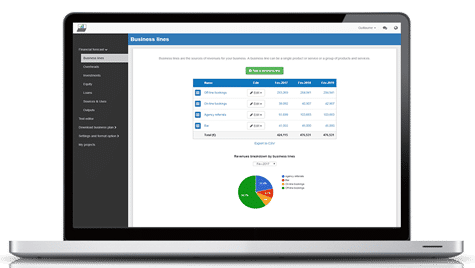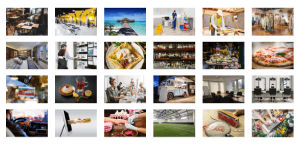How to create a financial forecast for a cafeteria?
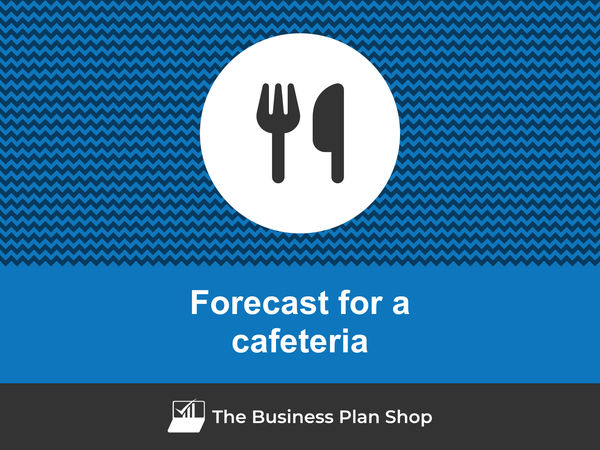
If you are serious about keeping visibility on your future cash flows, then you need to build and maintain a financial forecast for your cafeteria.
Putting together a cafeteria financial forecast may sound complex, but don’t worry, with the right tool, it’s easier than it looks, and The Business Plan Shop is here to guide you.
In this practical guide, we'll cover everything you need to know about building financial projections for your cafeteria.
We will start by looking at why they are key, what information is needed, what a forecast looks like once completed, and what solutions you can use to create yours.
Let's dive in!
Why create and maintain a financial forecast for a cafeteria?
Creating and maintaining an up-to-date financial forecast is the only way to steer the development of your cafeteria and ensure that it can be financially viable in the years to come.
A financial plan for a cafeteria enables you to look at your business in detail - from income to operating costs and investments - to evaluate its expected profitability and future cash flows.
This gives you the visibility needed to plan future investments and expansion with confidence.
And, when your trading environment gets tougher, having an up to date cafeteria forecast enables you to detect potential upcoming financing shortfalls in advance, enabling you to make adjustments or secure financing before you run out of cash.
It’s also important to remember that your cafeteria's financial forecast will be essential when looking for financing. You can be 100% certain that banks and investors will ask to see your numbers, so make sure they’re set out accurately and attractively.
Need a solid financial forecast?
The Business Plan Shop does the maths for you. Simply enter your revenues, costs and investments. Click save and our online tool builds a three-way forecast for you instantly.
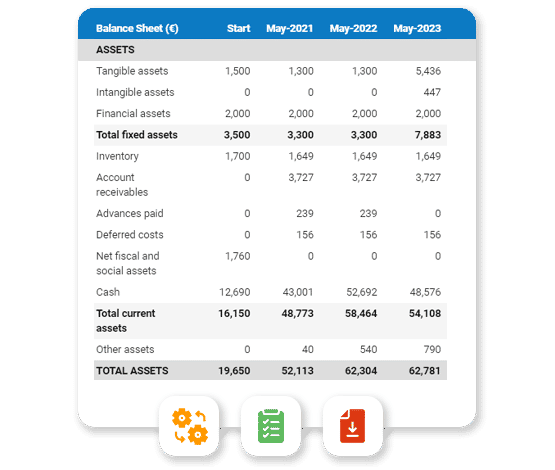
What information is needed to build a cafeteria financial forecast?
The quality of your inputs is key when it comes to financial modelling: no matter how good the model is, if your inputs are off, so will the forecast.
If you are building a financial plan to start a cafeteria, you will need to have done your market research and have a clear picture of your sales and marketing strategies so that you can project revenues with confidence.
You will also need to have a clear idea of what resources will be required to operate the cafeteria on a daily basis, and to have done your research with regard to the equipment needed to launch your venture (see further down this guide).
If you are creating a financial forecast of an existing cafeteria, things are usually simpler as you will be able to use your historical accounting data as a budgeting base, and complement that with your team’s view on what lies ahead for the years to come.
Let's now zoom in on what will go in your cafeteria's financial forecast.
The sales forecast for a cafeteria
The sales forecast, also called topline projection, is normally where you will start when building your cafeteria financial forecast.
Creating a coherent sales projection boils down to estimating two key drivers:
- The average price
- The number of monthly transactions
To do this, you will need to rely on historical data (for an existing business), market research data (for both new and existing cafeterias), and consider the elements below:
- Location: The location of your cafeteria can greatly impact the average price and number of monthly transactions. If your cafeteria is located in a busy area with high foot traffic, you may be able to charge higher prices and expect more transactions. On the other hand, if your cafeteria is in a quieter area, you may need to lower your prices to attract customers and may have fewer transactions.
- Seasonal Changes: The time of year can also affect your average price and number of monthly transactions. For example, during the summer months, customers may be more likely to purchase cold drinks and salads, whereas during the winter months, they may be more interested in hot soups and sandwiches. This can impact your average price as well as the number of transactions.
- Menu Offerings: The menu items you offer can also play a role in your average price and number of monthly transactions. If you offer a wide variety of options, including healthy and vegetarian choices, you may be able to charge higher prices and attract a larger customer base. However, if your menu is limited or lacks variety, you may need to lower your prices and may see fewer transactions.
- Competition: The presence of competition in your area can impact your average price and number of monthly transactions. If there are several other cafeterias or restaurants in close proximity, you may need to keep your prices competitive in order to attract customers. Additionally, competition may also affect the number of transactions you see as customers may choose to go to a different location if they perceive better value or options.
- Customer Preferences: The preferences and tastes of your customers can also affect your average price and number of monthly transactions. If your customers prefer healthier options, you may need to offer more salads and fresh fruits, which may be more expensive and therefore impact your average price. Additionally, if your customers are price-sensitive, you may need to offer more affordable options to maintain a high number of transactions.
After the sales forecast comes the operating expenses budget, which we will now look into in more detail.
Need inspiration for your business plan?
The Business Plan Shop has dozens of business plan templates that you can use to get a clear idea of what a complete business plan looks like.
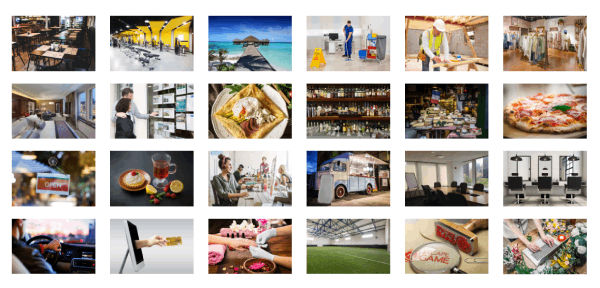
The operating expenses for a cafeteria
The next step is to estimate the costs you’ll have to incur to operate your cafeteria.
These will vary based on where your business is located, and its overall size (level of sales, personnel, etc.).
But your cafeteria's operating expenses should normally include the following items:
- Staff costs: This includes salaries, wages, and benefits for all employees working in the cafeteria, including chefs, servers, and cashiers.
- Food and beverage costs: This covers the cost of purchasing ingredients and supplies for the food and drinks served in the cafeteria.
- Rent and utilities: You will need to pay rent for the space where your cafeteria is located, as well as cover electricity, gas, and water bills.
- Accountancy fees: You may need to hire an accountant to help you manage your finances and file taxes for your cafeteria business.
- Insurance costs: It's important to have insurance to protect your cafeteria from any potential risks and liabilities.
- Software licenses: You may need to invest in software to manage your inventory, track sales, and handle other aspects of your cafeteria operations.
- Marketing and advertising: You will need to allocate funds for marketing and advertising to attract customers to your cafeteria.
- Cleaning and maintenance: Keeping your cafeteria clean and well-maintained is essential for providing a pleasant dining experience for your customers.
- Equipment and supply costs: This includes the cost of purchasing and maintaining kitchen equipment, utensils, and other necessary supplies for your cafeteria.
- Training and development: It's important to invest in training and development for your staff to ensure high-quality service and efficient operations.
- Credit card processing fees: If you accept credit card payments, you will need to budget for transaction fees charged by the credit card processor.
- Banking fees: You may need to pay fees for maintaining a business bank account and for any transactions or services provided by your bank.
- Waste management: Proper disposal of food waste and other garbage is crucial for maintaining a clean and hygienic environment in your cafeteria.
- Uniforms and apparel: Your staff may need uniforms or other apparel to maintain a professional appearance while working in the cafeteria.
- Licenses and permits: You may need to obtain licenses and permits to operate your cafeteria, which may come with associated fees.
This list is not exhaustive by any means, and will need to be tailored to your cafeteria's specific circumstances.
What investments are needed to start or grow a cafeteria?
Once you have an idea of how much sales you could achieve and what it will cost to run your cafeteria, it is time to look into the equipment required to launch or expand the activity.
For a cafeteria, capital expenditures and initial working capital items could include:
- Kitchen Equipment: This includes major appliances such as refrigerators, freezers, ovens, and stoves. These are essential for food storage, preparation, and cooking in a cafeteria setting.
- Furniture and Fixtures: This category includes tables, chairs, counters, and other furnishings for the dining area. It also includes fixtures such as sinks, water fountains, and display cases.
- Point of Sale (POS) System: A cafeteria needs a reliable and efficient system for processing payments and tracking sales. This may include hardware such as touch screen monitors and cash registers, as well as software for inventory management and reporting.
- Food Serving Equipment: This includes items such as trays, utensils, and food warmers. These are necessary for serving and maintaining the quality of food in a cafeteria.
- Storage and Shelving Units: A well-organized storage system is crucial for keeping food and supplies stocked and easily accessible. This may include shelves, cabinets, and storage bins.
Again, this list will need to be adjusted according to the specificities of your cafeteria.
Need a convincing business plan?
The Business Plan Shop makes it easy to create a financial forecast to assess the potential profitability of your projects, and write a business plan that’ll wow investors.
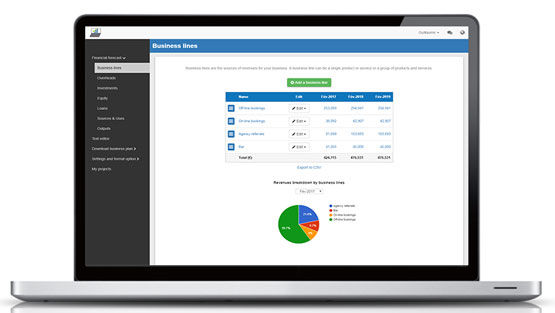
The financing plan of your cafeteria
The next step in the creation of your financial forecast for your cafeteria is to think about how you might finance your business.
You will have to assess how much capital will come from shareholders (equity) and how much can be secured through banks.
Bank loans will have to be modelled so that you can separate the interest expenses from the repayments of principal, and include all this data in your forecast.
Issuing share capital and obtaining a bank loan are two of the most common ways that entrepreneurs finance their businesses.
What tables compose the financial plan for a cafeteria?
Now let's have a look at the main output tables of your cafeteria's financial forecast.
The forecasted profit & loss statement
The profit & loss forecast gives you a clear picture of your business’ expected growth over the first three to five years, and whether it’s likely to be profitable or not.
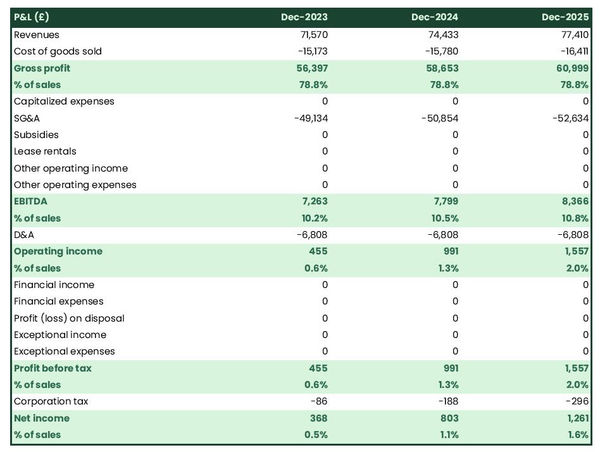
A healthy cafeteria's P&L statement should show:
- Sales growing at (minimum) or above (better) inflation
- Stable (minimum) or expanding (better) profit margins
- A healthy level of net profitability
This will of course depend on the stage of your business: numbers for an established cafeteria will look different than for a startup.
The projected balance sheet
Your cafeteria's projected balance sheet provides a snapshot of your business’s financial position at year-end.
It is composed of three types of elements: assets, liabilities and equity:
- Assets: represent what the business possesses including cash, equipment, and accounts receivable (money owed by clients).
- Liabilities: represent funds advanced to the business by lenders and other creditors. They include accounts payable (money owed to suppliers), taxes payable and loans from banks and financial institutions.
- Equity: is the combination of what has been invested by the business owners and the cumulative profits and losses generated by the business to date (which are called retained earnings). Equity is a proxy for the value of the owner's stake in the business.
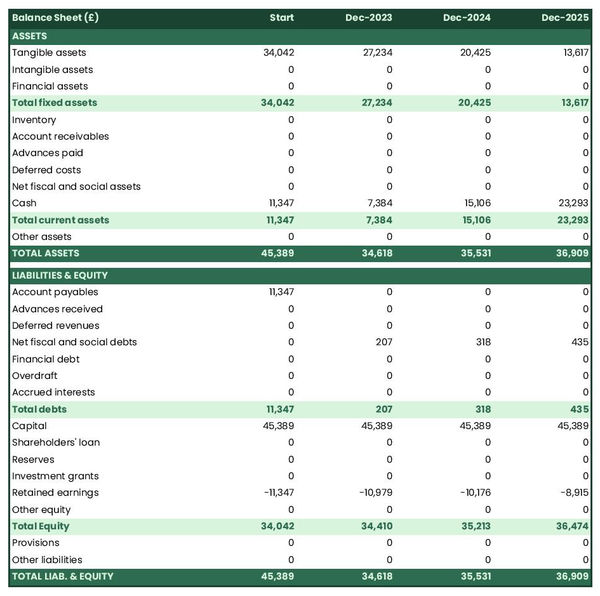
The cash flow forecast
Your cafeteria's cash flow forecast shows how much cash your business is expected to consume or generate in the years to come.
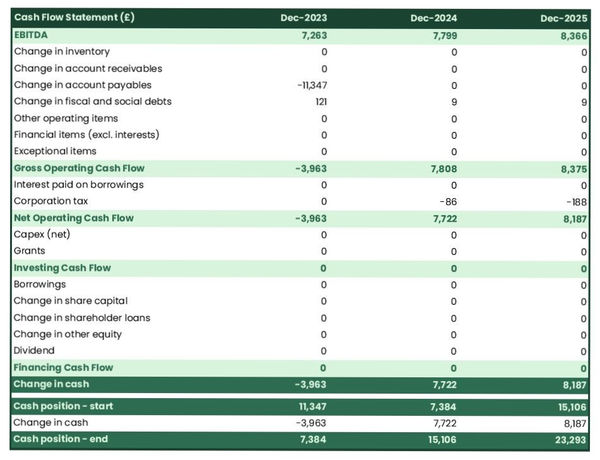
It is best practice to organise the cash flow forecast by nature to better explain where cash is used or generated by the cafeteria:
- Operating cash flow: shows how much cash is generated by the operating activities
- Investing cash flow: shows how much will be invested in capital expenditure to maintain or expand the business
- Financing cash flow: shows if the business is raising new capital or repaying financiers (debt repayment, dividends)
Keeping an eye on (and regularly updating) your cafeteria's cash flow forecast is key to ensuring that your business has sufficient liquidity to operate normally and to detect financing requirements as early as possible.
If you are trying to raise capital, you will normally be asked to provide a monthly cash flow forecast in your cafeteria's financial plan - so that banks or investors can assess seasonal variation and ensure your business is appropriately capitalised.
Need a solid financial forecast?
The Business Plan Shop does the maths for you. Simply enter your revenues, costs and investments. Click save and our online tool builds a three-way forecast for you instantly.

Which tool should you use to create your cafeteria's financial forecast?
Using the right tool or solution will make the creation of your cafeteria's financial forecast much easier than it sounds. Let’s explore the main options.
Using online financial forecasting software to build your cafeteria's projections
The modern and easiest way is to use professional online financial forecasting software such as the one we offer at The Business Plan Shop.
There are several advantages to using specialised software:
- You can easily create your financial forecast by letting the software take care of the financial calculations for you without errors
- You have access to complete financial forecast templates
- You get a complete financial forecast ready to be sent to your bank or investors
- You can easily track your actual financial performance against your financial forecast, and recalibrate your forecast as the year goes by
- You can create scenarios to stress test your forecast's main assumptions
- You can easily update your forecast as time goes by to maintain visibility on future cash flows
- You have a friendly support team on standby to assist you when you are stuck
- It’s cost-efficient and much cheaper than using an accountant or consultant (see below)
If you are interested in this type of solution, you can try our forecasting software for free by signing up here.
Calling in a financial consultant or chartered accountant
Enlisting the help of a consultant or accountant is also a good way to obtain a professional cafeteria financial forecast.
The downside of this solution is its cost. From experience, obtaining a simple financial forecast over three years (including a balance sheet, income statement, and cash flow statement) is likely to cost a minimum of £700 or $1,000.
The indicative cost above, is for a small business, and a forecast is done as a one-shot exercise. Using a consultant or accountant to track your actuals vs. forecast and to keep your financial projections up to date on a monthly or quarterly basis will cost a lot more.
If you opt for this solution, make sure your accountant has in-depth knowledge of your industry, so that they may challenge your figures and offer insights (as opposed to just taking your assumptions at face value to create the forecast).
Why not use a spreadsheet such as Excel or Google Sheets to build your cafeteria's financial forecast?
Creating an accurate and error-free cafeteria financial forecast on Excel (or any spreadsheet) is very technical and requires both a strong grasp of accounting principles and solid skills in financial modelling.
Most entrepreneurs lack the expertise required to create an accurate financial forecast using spreadsheet software like Excel or Google Sheets. As a result, it is unlikely anyone will trust your numbers.
The second reason is that it is inefficient. Building forecasts on spreadsheets was the only option in the 1990s and early 2000s, nowadays technology has advanced and software can do it much faster and much more accurately.
This is why professional forecasters all use software. With the rise of AI, software is also becoming smarter at helping us detect mistakes in our forecasts and helping us analyse the numbers to make better decisions.
Finally, like everything with spreadsheets, tracking actuals vs. forecasts and updating your forecast as the year progresses is manual, tedious, error-prone, and time-consuming. Whereas financial forecasting software like The Business Plan Shop is built for this.
Need a convincing business plan?
The Business Plan Shop makes it easy to create a financial forecast to assess the potential profitability of your projects, and write a business plan that’ll wow investors.

Use our financial projection templates for inspiration
The Business Plan Shop has dozens of financial forecasting templates available.
Our examples contain both the financial forecast, and a written business plan which presents, in detail, the company, the team, the strategy, and the medium-term objectives.
Whether you are just starting out or already have your own cafeteria, looking at our template is always a good way to get ideas on how to model financial items and what to write when creating a business plan to secure funding.

Takeaways
- A financial forecast shows expected growth, profitability, and cash generation metrics for your cafeteria.
- Tracking actuals vs. forecast and having an up-to-date financial forecast is key to maintaining visibility on your future cash flows.
- Using financial forecasting software is the modern way of creating and maintaining financial projections.
We hope that this guide helped you gain a clearer perspective on the steps needed to create the financial forecast for a cafeteria. Don't hesitate to contact us if you have any questions!
Need inspiration for your business plan?
The Business Plan Shop has dozens of business plan templates that you can use to get a clear idea of what a complete business plan looks like.

Also on The Business Plan Shop
Know someone who runs a cafeteria? Share our business guide with them!

